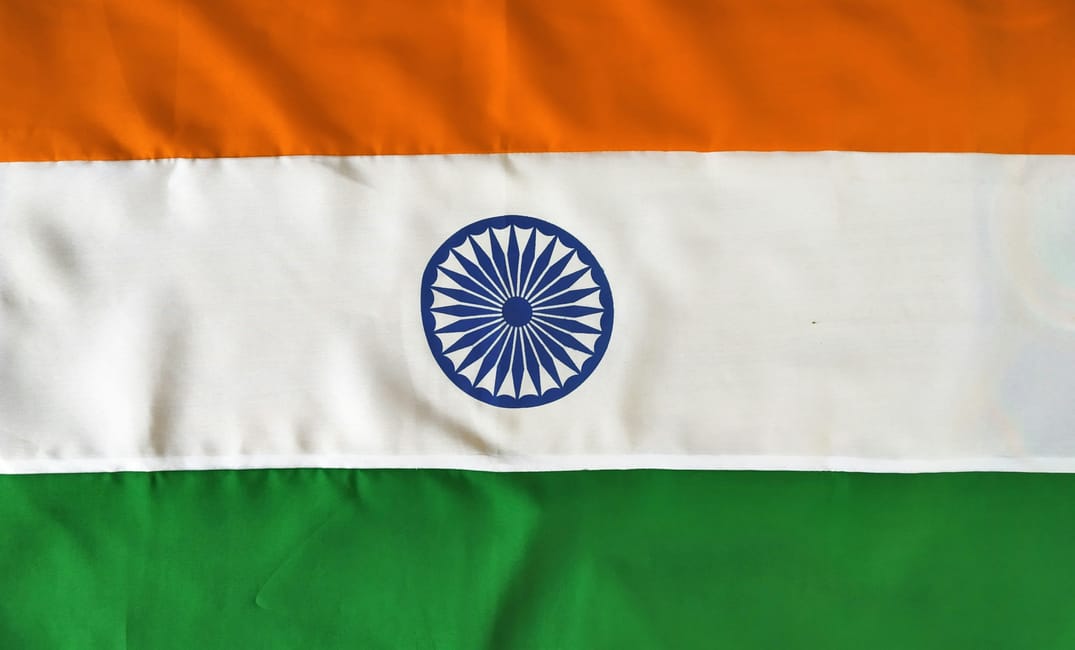Grace Couch | @GCouch99
You’ve probably heard a bit about the farmer’s protests in India on your social media timelines, But in terms of the mainstream media, a lot of young British Indians feel like we really haven’t really heard much about the protests, or what it means for Indians and the global community.
So here’s everything you need to know about why millions are protesting, what it means and how you can help.
What’s happening?
Farmers from the Punjab region of India have been protesting in the capital city of New Delhi for nearly two weeks against new agricultural laws, over fears they will be so harmful that many will no longer be able to sustain their businesses. The protests have seen hoards of tractors on the streets, manned barricades and the burning of crop residue creating an unbearable smog. At least fifteen opposition parties have backed the call for the strike.
The three new laws, passed in September, will deregulate Indian agriculture. In doing so, the Indian government will no longer be the middleman that guarantees minimum prices for certain crops. This is not an unusual arrangement, as this is the basis of the EU Common Agricultural Policy (the CAP) which ensures an affordable food supply.
However, losing this in India will put already struggling farmers at a greater disadvantage as they believe the overhaul will lead to lower prices and pave the way for corporate takeovers of their small farms, which average less than three acres in size. Prime Minister Modi has said that his market-oriented reform would free them from the constraints of a state-run system. The language of the new legislation is vague, and with each round of talks between the government and farmers’ unions breaking down, they don’t believe the government has the grass roots farmers’ interests at heart.
The protests have sparked solidarity by followers of the Sikh faith in San Francisco, London and elsewhere, while mainstream western news outlets have shown less conviction in covering the major story.
What is the background?
Controversy over an issue such as farming is guaranteed to cause a storm in India, with more than half of Indians, in a country of nearly 1.4 billion, making a living on farms. Activists argue that small-scale farmers have helped India become self-sufficient in food over the decades, a proud agrarian tradition that has now been eroded. The Prime Minister is under pressure to modernise and industrialise India, alongside international obligations to do so sustainably.
The debate has touched a nerve in the ‘grain store’ of the country. The region of Punjab played an integral role in the 1960s through to the 1980s as a country that was desperately short of grains and heavily dependent on US imports. As one of the most irrigated areas, the Punjab was the production front runner that enabled the Minimum Support Price system to be devised. As a result of this, however, the average income of the Punjab farm household is the highest in India — in fact, almost two-and-a-half times that of an average farm household in the country, leading some to some scepticism around the protests coming from this region.
There is also a history of suppression of the Punjab state by ‘the Centre’, with a left wing tendency politically active amongst Sikhs, who make up the majority in Punjab, compared to the Hindu-majority in the rest of India. It is these ‘scars’ that are argued by many to be yet to heal and are creating the undercurrent of the current protests. This anti-Centre sentiment is shared by farmers, labourers and activists across the country.
Across the country however, these protests are coming at a time when the country is facing its third wave of COVID-19.
What is the media saying about it?
With the protests becoming destructive in some areas and a hunger strike starting in others, one of the largest demonstrations of the year is barely hitting the front pages. At the time of writing, it takes a good search on BBC News to find an update on the situation in India.
Some are claiming that the reluctance to provide air time to the protests stems from a western hesitancy to recognise unity amongst both the Sikh and Muslim communities across the world. Not only are the faiths experiencing solidarity from their members abroad, but are showing inter-faith harmony between themselves. In a video shared on Twitter, Muslim farmers in the protest could be seen offering prayers on the street while more than a dozen Sikh farmers were standing next to them, in complete silence, to let them pray in peace.
As with most grassroots uprisings, social media has been a lot more vocal about the protests than traditional news outlets. However, while inter-faith sentiments are being applauded, there are also more misleading images being shared.
The BBC ‘reality check’ team have reported that Twitter accounts of the Indian Youth Congress and other senior opposition Congress leaders have shared old images (from an October 2018 protest) which show barricades and water cannons used by the police, suggesting they are depictions of the current protests.
One such post says the government is treating the farmers like “terrorists.”
Although water cannon and tear gas have been used by the police in recent days, some of these images are not only from a different protest, two years previously – they are also taken in a completely different location, as found when a reverse image search showed they are images from a 2018 protest against loan waivers. This row was also between farmers and the central government, however, demonstrating how ingrained this conflict is and it sheds some light as to why these images may have been used in the long standing context of this volatile relationship.
Similarly, a fake screenshot of US vice-president-elect Kamala Harris apparently extending support to the protesting farmers in India has also been https://www.bbc.co.uk/news/world-asia-india-55157714shared on Facebook. The tweet appears to be under her twitter handle alongside the text “We are shocked to see the Indian government’s suppression of farmers protesting new laws which will endanger their livelihood. Instead of using water cannons and tear gas, the Indian government needs to engage in open dialogue with farmers.”
Facebook has since put a warning on the post, stating it has been manipulated. Ms Harris has not commented on these protests, on either her personal or official Twitter accounts and her media team have confirmed that it is fake.
Canadian Prime Minister Justin Trudeau has however publicly expressed concern about the police response to protestors – remarks which were rebuffed by the Indian government which said they were “ill-informed.”
Finally, a tweet claiming that 250 million Indians have taken to the streets (almost equivalent to the US population) is yet to be corroborated, yet this does not detract from the magnitude of the problem.
What can you do about it?
Protestors have descended on the Indian High Commission in London as well as the streets of Birmingham, however there have been warnings regarding Covid compliance and social distancing. British descendants of India farmers have been showing their gratitude towards the older generations that paved the way for their current livelihoods. Some are taking the decision to protest in their cars within their households to aid social distancing, therefore not having to sacrifice their safety for the importance of protesting on this human rights issue.
As with all human rights issues, you do have the power to do something. Use your voice – speak to friends and family, write to your MP and share information on social media (if you have checked the sources first of course!).
If you’re in a fortunate enough position to be able to donate to support the protestors, check out Khalsa Aid an international humanitarian group and Sahaita a volunteer-based not for profit collecting money for the families affected.
Thanks for reading our article! We know young people’s opinions matter and really appreciate everyone who reads us.
Give us a follow on Instagram, Twitter and Facebook to stay up to date with what young people think.

